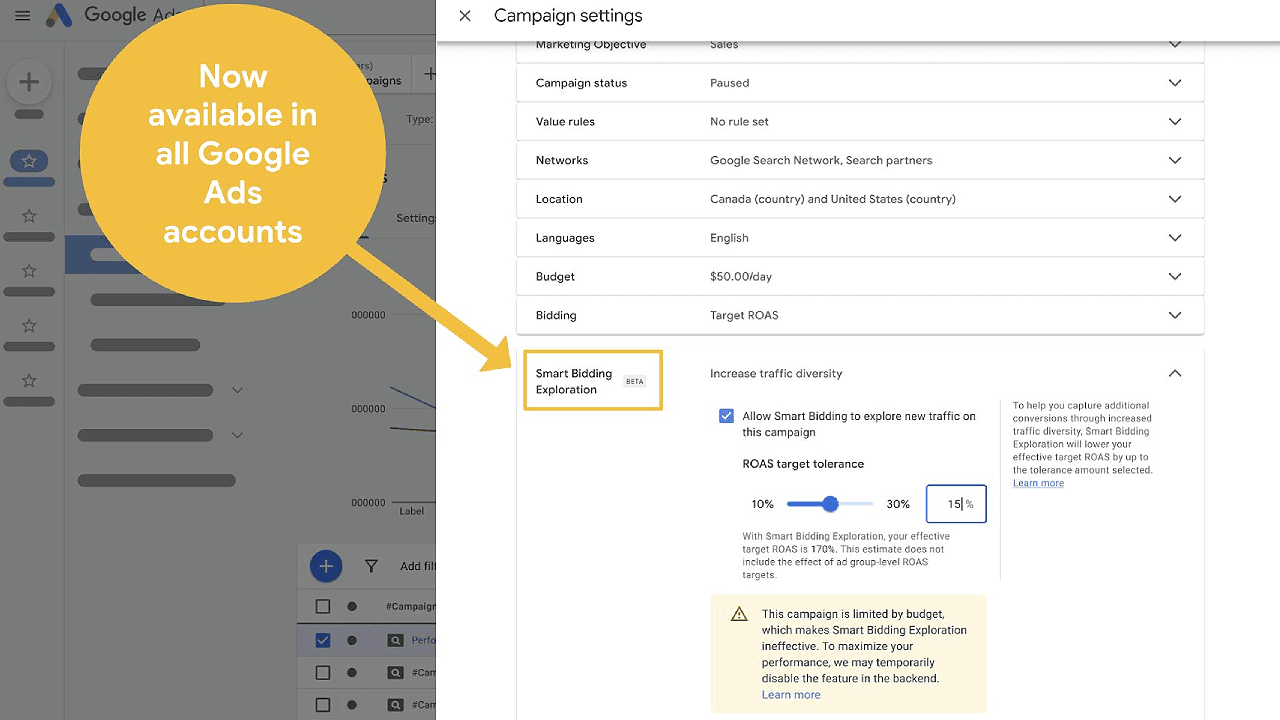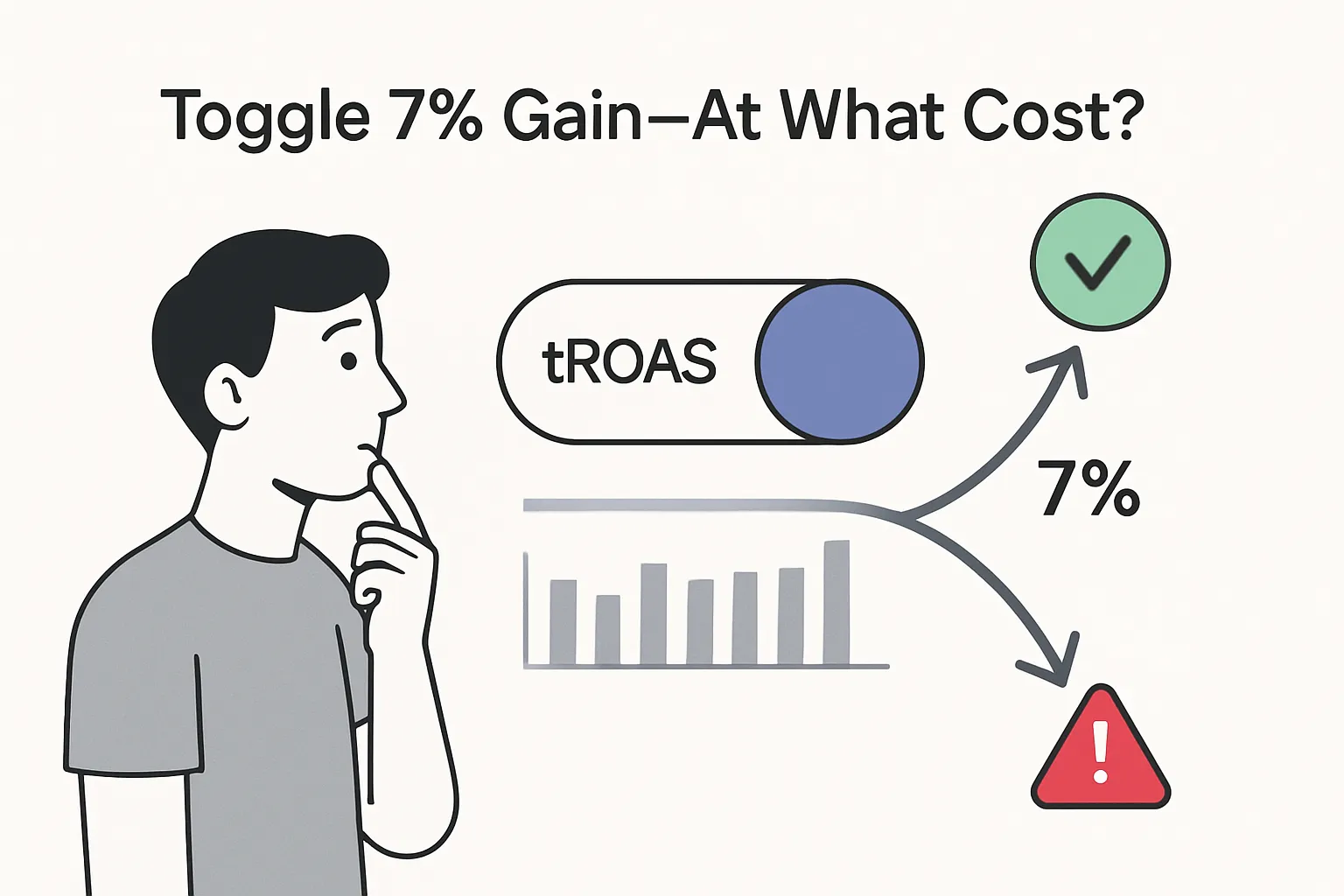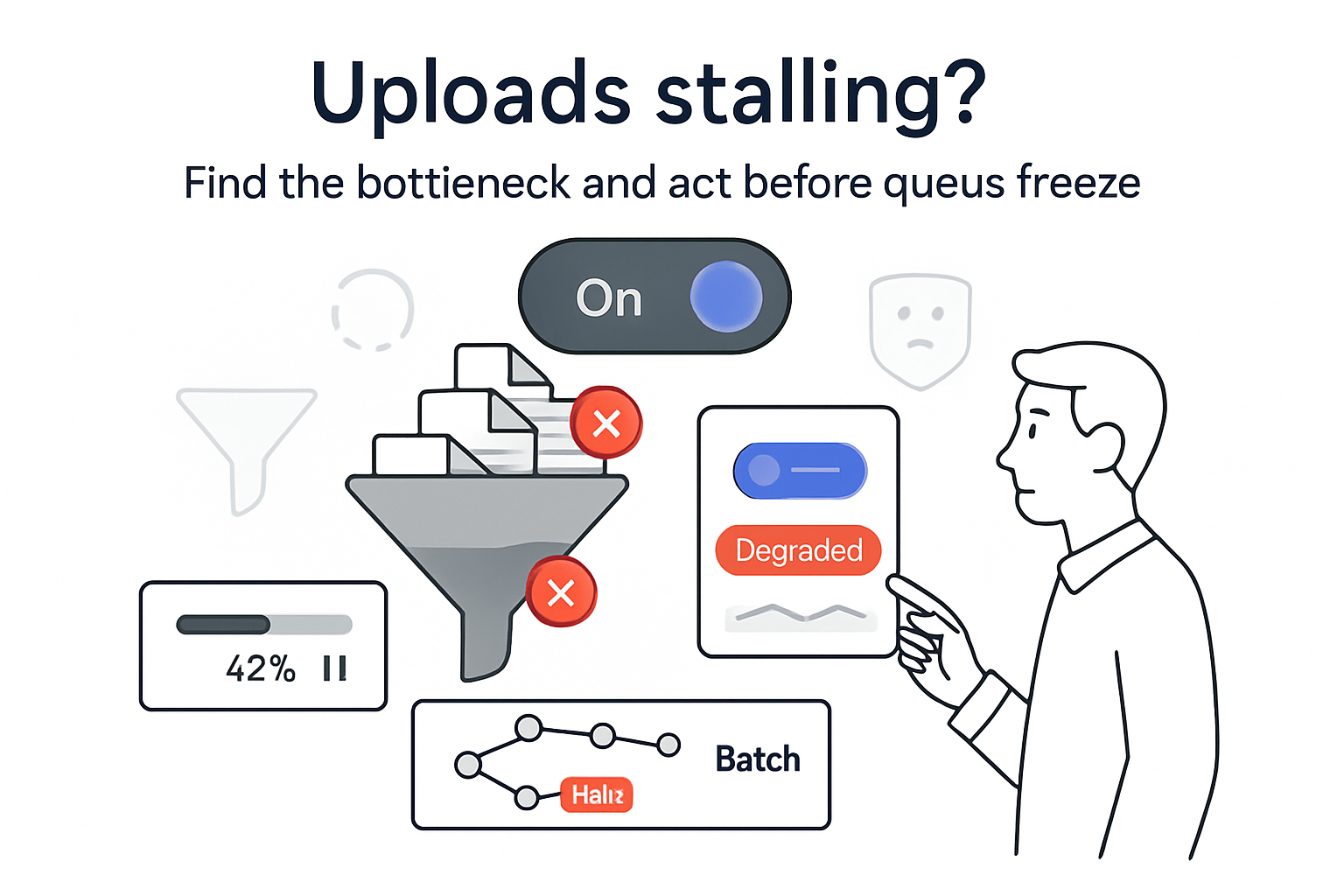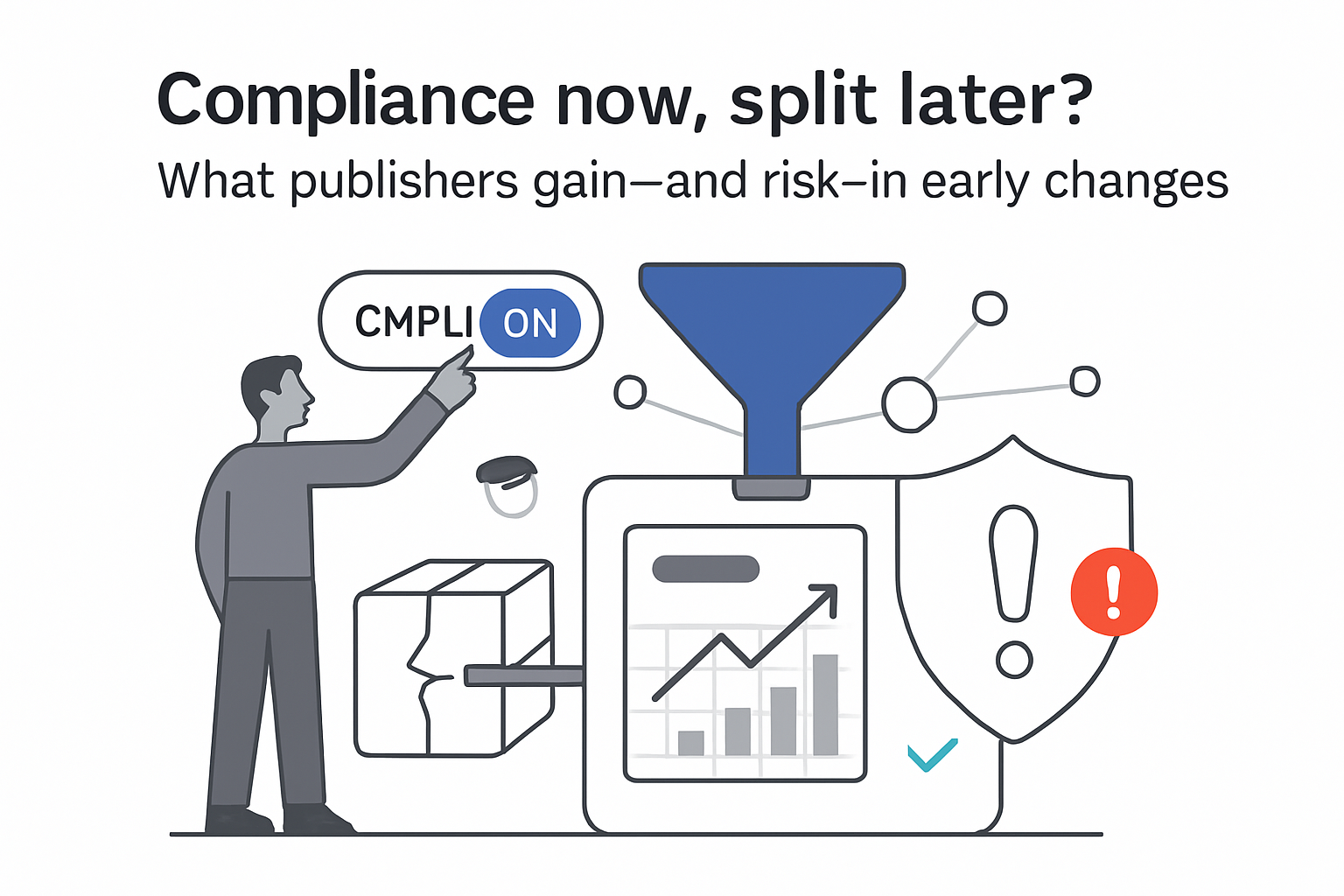Google has activated Smart Bidding Exploration for all Target ROAS (tROAS) campaigns, giving its algorithm the freedom to test a larger set of auctions while keeping the advertiser’s return goal intact. Early data points to incremental conversions with negligible ROAS impact, but the setting also introduces new measurement and forecasting considerations.
Smart Bidding Exploration in tROAS campaigns
Smart Bidding Exploration acts as a pressure-release valve: it briefly widens the bid corridor that tROAS normally enforces, allowing Google Ads to sample queries just below – or above – the target threshold. The feature is enabled with a single toggle at either the campaign or portfolio level; no budget or creative edits are required. According to Google’s internal case studies shared at Marketing Live 2025, median lift so far sits at 3-7 percent conversions at flat spend, with no material ROAS erosion across more than 500 U.S. Search campaigns.

Conceptually, the workflow resembles a volatility band in finance:
Fixed tROAS - Exploration on - Wider bid range (about ±15 percent, per beta notes) - Rapid learning - Either keep the wider band or snap back automatically if performance slips.
Key takeaways for paid media teams
- Expect 2-8 percent conversion upside that plateaus after roughly six weeks. Treat the setting as an accelerant, not a permanent growth engine.
- Budgets do not have to rise, but impression mix will shift toward broader, upper-funnel queries.
- Portfolio-level activation spreads risk yet blurs campaign-level learnings. Granular P&L setups may prefer standalone tests.
- Competitive categories should anticipate 3-5 percent CPC drift as more advertisers widen bids.
- Clean conversion tagging is critical; exploration magnifies any tracking inaccuracies.
Situation snapshot
Trigger: Full roll-out to all Google Ads accounts on 17 July 2025.
- One-click opt-in; works only with tROAS bidding.
- ROAS target value stays fixed; Google decides which auctions to stretch into.
- No extra fee or minimum budget.
- Originally tested as “Bidding Exploration” in September 2024; formally announced under the AI Max banner at Marketing Live 2025.
- Positioning: “unlock more traffic without lifting budgets.”
- Details confirmed through Google Ads help files, product-manager commentary, and screenshots posted by beta users on LinkedIn and X, including Maximilian vom Eyser.
How the new exploration setting unlocks more auctions
Classic tROAS suppresses any auction whose predicted conversion value divided by cost falls below the set target. Exploration inserts a two-step loop:
- Exploration mode
Bid elasticity widens by roughly 10-20 percent, letting the system sample clicks near the cutoff for one to two weeks (or 3 000 interactions). - Evaluation gate
If cumulative variance stays within a 3 percent guardrail, the broader bid band persists. Otherwise the algorithm reverts and logs the change in the account history.
The process runs inside the existing Smart Bidding stack, so no separate “learning” icon appears in the UI, a quirk that led some beta accounts to think the toggle was inactive.
Impact by channel and workflow
- Paid Search operations – Campaigns capped by strict tROAS or impression-share ceilings stand to gain most. Advertisers already fluid with budgets will see smaller deltas.
- Shopping & Feed management – Shopping campaigns on tROAS can opt in. Expect more generic product terms; keep feed titles descriptive.
- Creative & CRO – Extra upper-funnel clicks heighten the need for fast pages and first-party data capture to ensure long-tail revenue is attributed.
- Finance & Forecasting – Cash-flow timing may widen if more conversions start as window-shopping sessions. Align attribution windows with finance reporting.
- Agency–client relations – Because the toggle is reversible, agencies can frame it as a defined experiment (e.g., +5 percent conversions at 95 percent of baseline ROAS) and manage expectations on spend.
Future scenarios for tROAS bidding
- Base (60 percent): 3-7 percent conversion lift, 0-2 percent ROAS erosion; feature becomes default-on for new tROAS campaigns by mid-2026.
- Upside (25 percent): Google integrates account-level profit data, letting advertisers specify margin thresholds and unlocking deeper gains.
- Downside (15 percent): Click inflation outpaces conversion growth in price-sensitive verticals. Early adopters switch off, prompting Google to recalibrate or limit availability.
Open questions, risks, and limits
- Google has not disclosed exact bid-variance ranges or guardrail logic; third-party audit is impossible.
- Any mis-tagged conversions will skew ROAS more than usual because exploration traffic sits near the profitability margin.
- As adoption rises, baseline CPCs may drift upward, muting late-adopter gains.
- Regulators could focus on the wider bid latitude as a form of undisclosed dynamic pricing, triggering transparency requirements.
- Accounts with low daily budgets (under USD 50) might not generate enough data, causing mode oscillation.
Sources
- [S1] Search Engine Land, Adegbola A., 17 Jul 2025, “Google Ads rolls out Smart Bidding Exploration for tROAS campaigns.” (Search Engine Land is owned by Semrush)
- [S2] Google Marketing Live 2025, session transcript “AI Max: Next-gen optimization,” 21 May 2025.
- [S3] LinkedIn post, Maximilian vom Eyser, Senior Digital Growth Strategist at Google, 17 Jul 2025, product screenshot of account-level availability.
- [S4] Google Ads Help Center, “About Smart Bidding Exploration,” updated 17 Jul 2025.
- [S5] Internal beta deck circulated to Premier Partners, Oct 2024, slide 14 “Performance lift expectations (n=517).”







.svg)